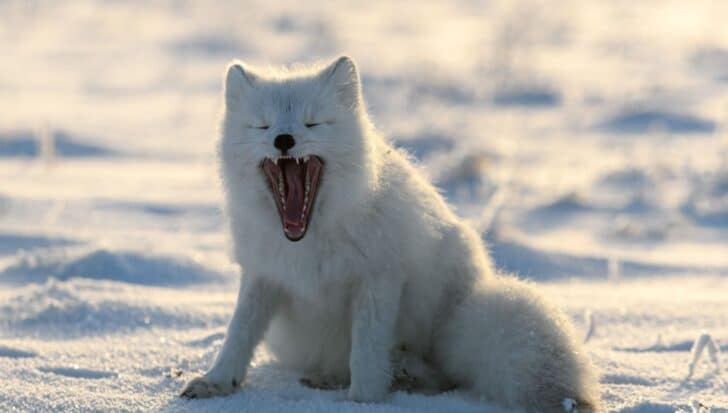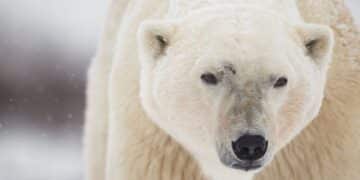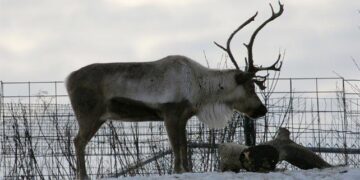If you ever go on an Arctic expedition, the Arctic fox is one of the most beautiful animals you’ll see. Their thick, snow-white fur coat and beady dark eyes are two of their most striking features.
These small predators are incredibly resilient. The icy, snowy region of the far northern hemisphere where they live isn’t exactly the most comfortable by any standard.
Yet, Arctic foxes don’t just survive in the cold; they thrive in it!
Come along, adventurers, as we dive into what makes the Arctic fox extraordinary beyond their undeniably adorable appearance.
Arctic foxes are the only land mammals native to Iceland.

Arctic foxes have lived in Iceland long before humans ever set foot there. Scientists believe they arrived about 10,000 years ago during the ice age.
During this period, a bridge of ice appeared, connecting Iceland to neighboring regions like Russia, Greenland, and North America. This allowed the Arctic foxes to migrate to the small island.
They are built to survive freezing weather.

Arctic foxes live in one of the coldest places on earth, the Arctic. This region can experience winter temperatures as low as −65 degrees Fahrenheit (−54 degrees Celsius).
But the frigid arctic weather is no match for this fox; they’re so good at dealing with the cold that they don’t even need to hibernate!
Their small round bodies, short limbs, and tiny ears help prevent unnecessary heat loss.
They also have a thick, impermeable fur coat and a fluffy tail, which they sometimes wrap around themselves like a winter scarf.
Together, these adaptations allow Arctic foxes to endure extreme temperatures, only beginning to shiver when temperatures drop below −94 °F (−70 °C)!
Arctic foxes have color-changing fur.
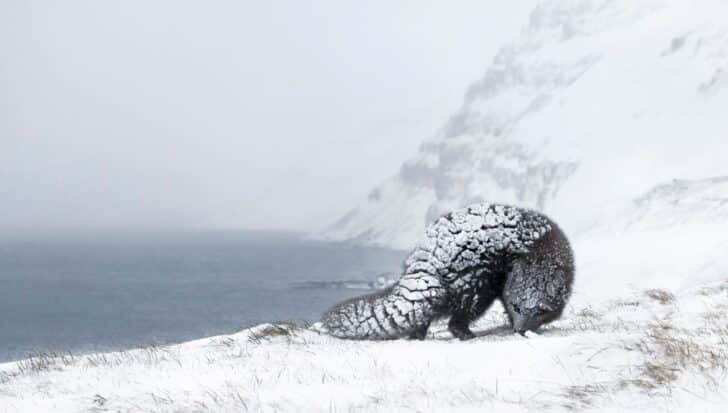
Arctic foxes’ brilliant white fur helps them blend seamlessly with the snowy background in winter.
But come summer, you won’t see white foxes around. This is because they shed their white fur for a grey-brown coat around June.
This new coat is thinner, breathable, and suitable for warm weather. It also blends better with the landscape as the ice melts away.
They stick to one mate for life.
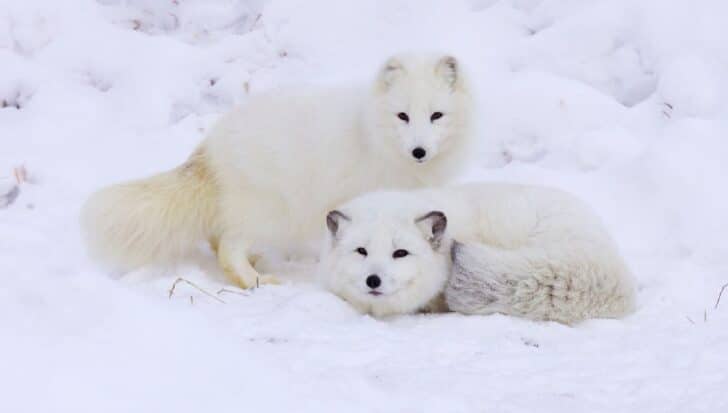
Courtship season for Arctic foxes typically starts two months before winter ends and is a lively affair.
Single foxes chase each other around and engage in playful fights before eventually forming pairs.
But it’s not just for the breeding season; they stick together long after, working as a team to raise and feed their young.
They can smell food miles away.
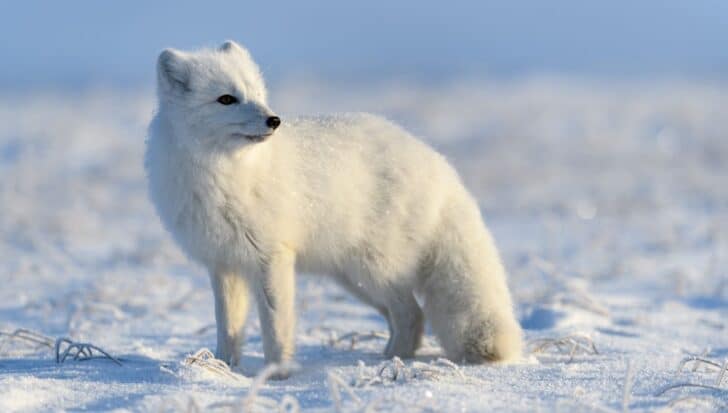
Food can sometimes be scarce in the Arctic. Thankfully, the Arctic fox’s keen sense of smell gives it an advantage.
If there’s a seal den about a mile away, they can pick up on the smell, especially if there are small seal pups to prey on.
They’re also scavengers, so they use this sharp sense of smell to sniff out animal carcasses from over 20 miles (32 kilometers) away.
Arctic fox moms can give birth to 25 puppies in one litter.
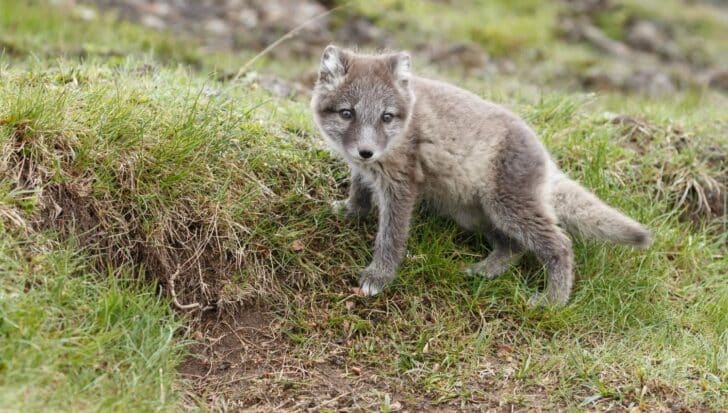
The average Arctic fox mom gives birth to a litter of five to eight pups at the end of her 51 to 57-day pregnancy. But sometimes, they can have up to 25 pups in one litter.
These newborn arctic foxes are blind, deaf, and toothless, requiring much care.
Thankfully, the supermom Arctic fox doesn’t have to do all the work alone. The dad fox is actively involved in taking care of the little ones.
In addition, the family may also have another young female fox, typically one from a previous litter. She stays back to be a sort of nanny for the new set of puppies.
Some Arctic fox dens are centuries old and are passed down from generation to generation.
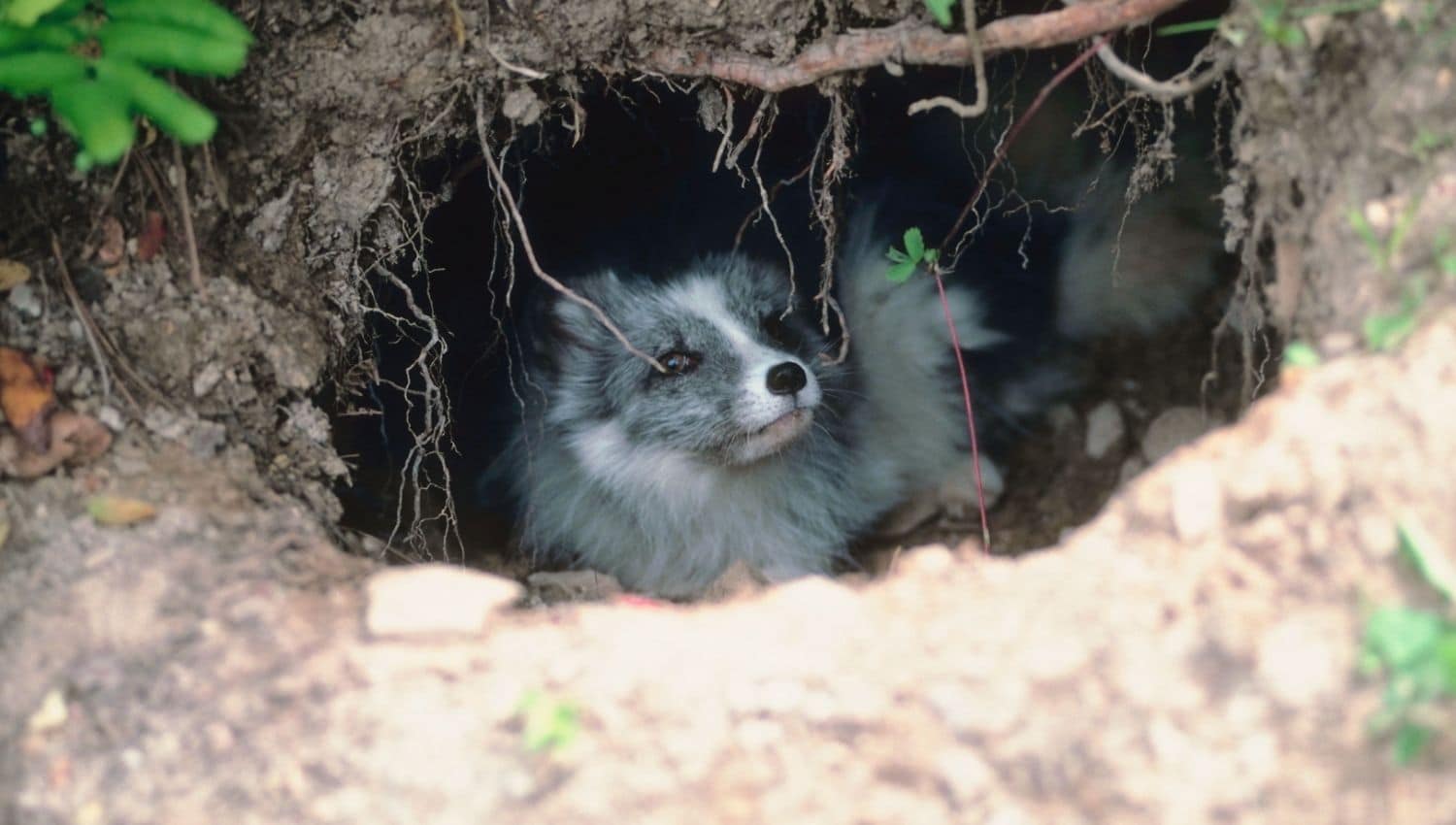
Arctic foxes use extensive interconnected underground tunnels as dens. These hideouts typically have multiple entrances and exits.
Interestingly, most of these dens are much older than the foxes residing in them. Some are over 300 years old and have housed many generations of Arctic foxes.
They freeze leftovers for later.
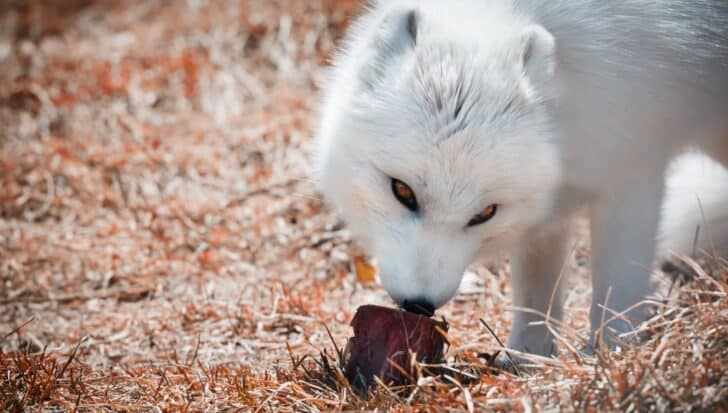
During the warmer months, when food is abundant, Arctic foxes drag leftovers to their den, leaving them under rocks or burying them in the snow to preserve them.
They often leave these food reserves for when times are tougher, such as in the middle of winter, with eggs being a particular favorite.
If any are left by spring, they provide essential nourishment for the mating season.
Most Arctic foxes don’t live past the first year in the wild.
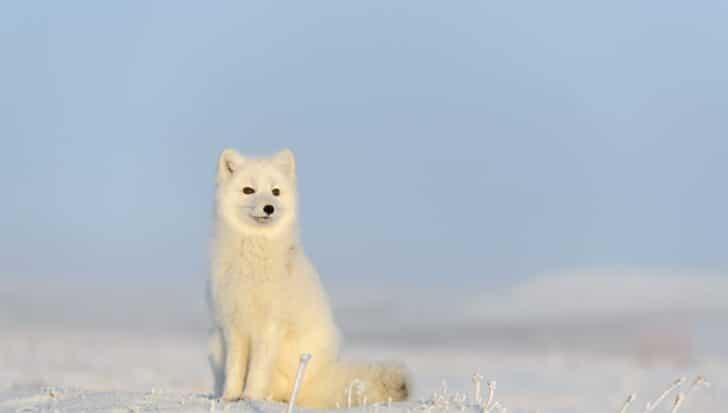
In the wild, the odds are stacked against Arctic fox pups. They face threats like predators, food scarcity, and illness, so most of them don’t make it to the following year.
Unfortunately, things don’t get better after the first year. The average lifespan of wild arctic foxes is only three to six years.
In comparison, those in captivity, where the environment is controlled, may live up to 14 years.
Arctic foxes are nomadic explorers.
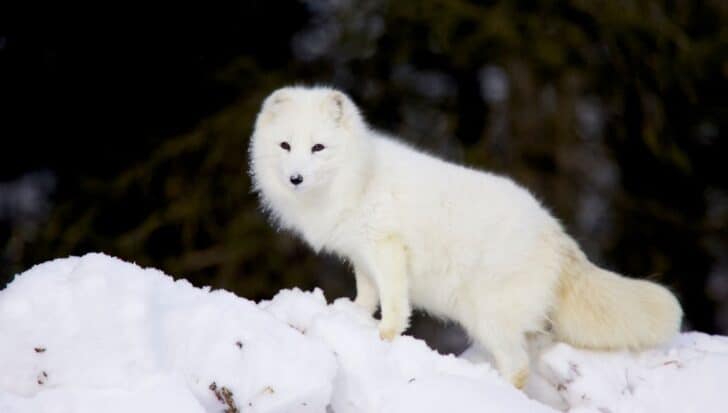
Arctic foxes often travel great distances to find food or shelter. But they don’t usually embark on these trips alone; these social creatures commute in groups.
Want to know how far they can travel?
One brave young fox surprised researchers by traveling 2,175 miles (3,500 km) from Norway to Canada in only 76 days!
They are surprisingly good swimmers.
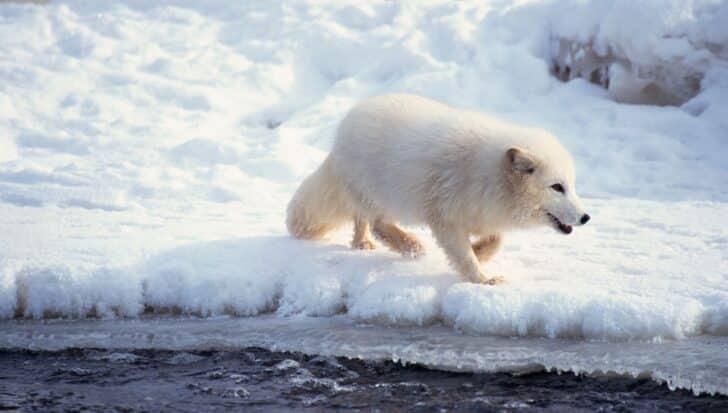
You’ll hardly see arctic foxes swimming leisurely for enjoyment. To be honest, you wouldn’t want to dive into freezing waters in the Arctic at negative temperatures, either.
Swimming is unique to arctic foxes, as other foxes, like red foxes, will do anything they can to avoid it.
If arctic foxes see a water body in their path during migration or while hunting, though, they’re not afraid to take the plunge.
Their paws are like natural snowshoes.
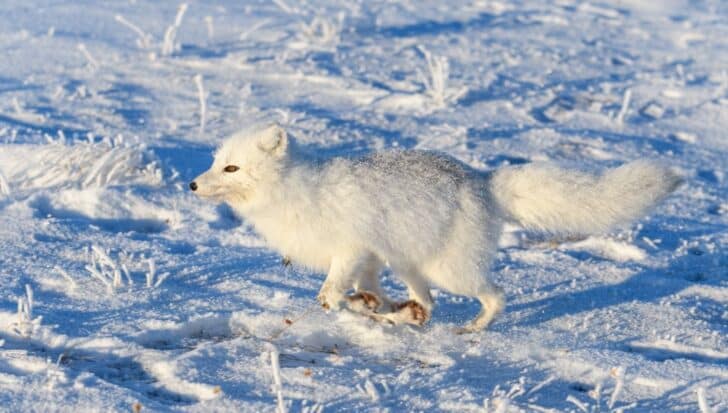
Ever wondered how arctic foxes travel great distances, marching through snow and ice without getting frostbite?
The answer is their thick furry footpads that offer protection from the cold, just like snow shoes.
This adaptation also gives them excellent grip so they don’t slip on ice when running after prey or away from predators.
They can last up to two weeks without food.
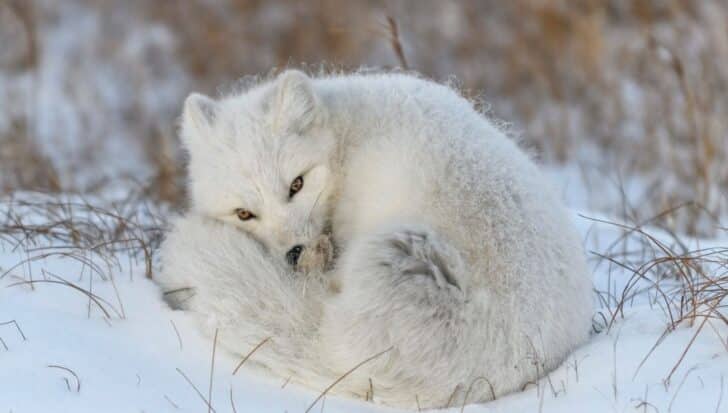
Arctic foxes are opportunistic feeders and will eat anything that comes their way, including animals, insects, and berries.
If hunting is unsuccessful, they’ll hang around polar bears to claim their leftovers.
However, sometimes the weather becomes so unfriendly that even scraps are hard to come by. When they run out of options, they can slow their metabolism to reserve energy.
This way, they can survive for the next two weeks or more until they find food again.
Arctic foxes can put on up to half of their body weight in fat during fall.
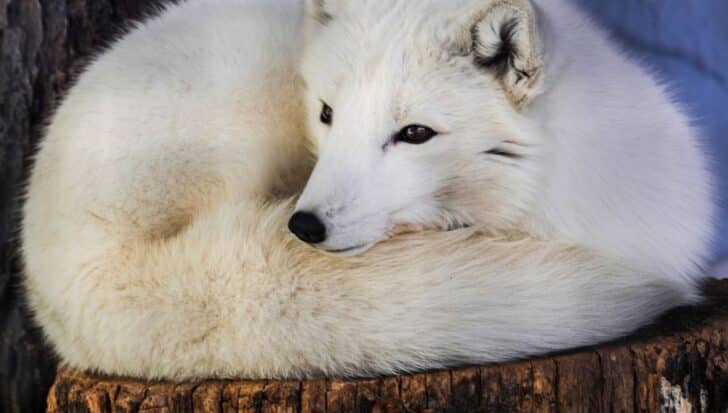
There’s usually more food available in fall, so arctic foxes go on a feeding frenzy. They eat so much that they may gain a lot of weight. But it’s for a good cause.
When winter comes, this fat helps insulate the body. It’s also burned for energy and heat when necessary.
They have small ears yet have excellent hearing.
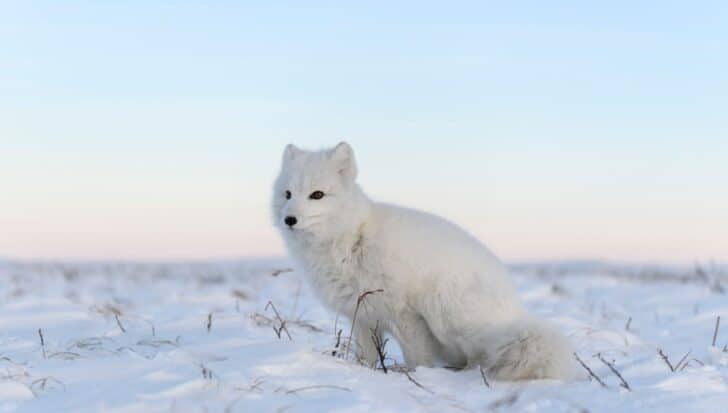
The Arctic fox’s small ears are an adaptation that helps them prevent heat loss in the cold.
Still, their sense of hearing is sharp enough to pick up on faint sounds. They can hear small prey scrambling in tunnels deep beneath the snow.
These little explorers, who claimed Iceland long before humans arrived, are no pushovers.
Arctic foxes are masters of the Arctic tundra, equipped with remarkable adaptations and resourcefulness to thrive in the coldest of environments.
Underneath their adorable fluffy coat is a capable predator and scavenger. Their ability to survive despite the challenges of their environment teaches us that we can, too, with the right skills and resilience.

